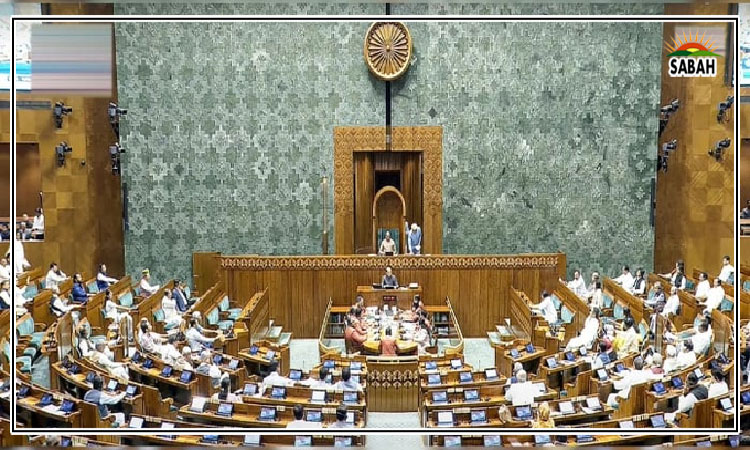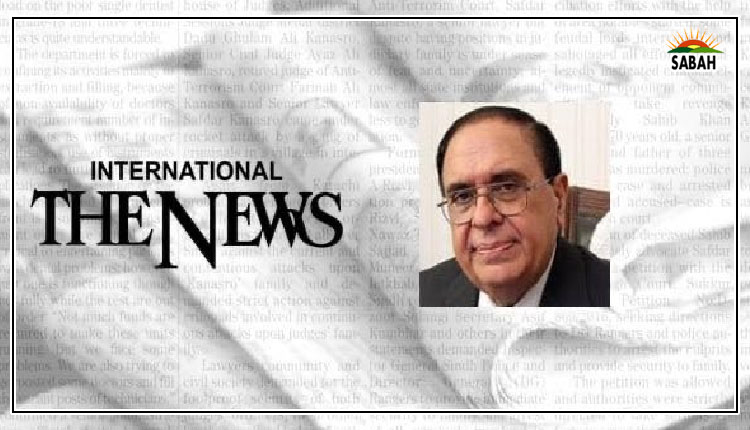Misguided fiscal policies…Atta-ur-Rahman
Earlier this year, bowing to the demands of the IMF, Pakistan raised its interest rates by a whopping 300 basis points to 20 per cent, the highest in Asia.
This has meant that industries across the country that had borrowed money from banks to expand now have to pay 24 per cent interest or even more annually on existing loans. This has resulted in closure of many industries with a resulting loss of a huge number of jobs as well as rising poverty. According to experts, about seven million workers have been fired and hundreds of factories closed down in Faisalabad alone as Pakistans textile exports collapse. The pharmaceutical sector, the automobile sector and many other industrial sectors are facing the same situation.
The closure of industries has resulted in lack of job opportunities for our talented youth leading to hopelessness and mass migration to foreign countries. Young, educated Pakistanis are now leaving our shores in hundreds of thousands. According to newspaper reports, approximately 765,000 people left Pakistan in 2022 including 92,000 highly educated people like doctors, engineers, information technology experts and accountants. This number is about triple the 225,000 departures in 2021 and 288,000 emigrants in 2020. The number has further grown in 2023, highlighting the negative impact of IMF-driven economic policies. There can be no greater disaster for a nation than to be witness to mass migration of its talent.
High-interest rates can have a devastating impact on world economies as is evident from many international examples. There are negative consequences on trade, commerce, industrial manufacture, industrial expansion, socioeconomic development, and poverty. For instance, in Brazil during the 2015-2016 period, the Central Bank raised its benchmark interest rate to combat surging inflation. As a result, Brazilian exporters faced higher financing costs, leading to severely reduced exports and trade imbalances.
Argentinas exports were similarly impacted in 2001 as the high-interest rates made it difficult for manufacturers to access credit and maintain production levels. The textile industry in Argentina suffered due to reduced consumer spending, and the agricultural sector faced challenges in exporting their produce, leading to decreased foreign exchange earnings. The crisis plunged millions of Argentinians into poverty and caused the collapse of various industries.
Similarly, Zimbabwe suffered an industrial collapse due to high interest rates introduced by the government to control hyperinflation in the early 2000s. The damaged industrial sectors included agriculture, mining, and manufacturing, with the resulting sharp rise in poverty levels.
More recently in 2018-2019, Turkey too experienced the devastating effects of high interest rates. The construction industry, which heavily relied on loans for large-scale projects, experienced a sharp decline in investments. The automotive sector, one of Turkeys major export industries, also faced severe challenges due to reduced demand and increased costs of production, affecting its export competitiveness.
Another example is that of the experience of Nigeria in 2016-2017. To control inflation and stabilize the currency, the Central Bank of Nigeria raised interest rates significantly. The high-interest rate environment constrained economic growth, leading to widespread unemployment and poverty. As a result, major damage was caused to the oil and gas industry, the backbone of the Nigerian economy.
The experience of Thailand in 1997 is another glaring example of the dangers associated with hyper interest rates. During the Asian Financial Crisis of 1997, Thailand raised interest rates to protect its currency. The high-interest rates contributed to a sharp economic downturn, causing many businesses to collapse, leading to increased poverty and unemployment. The worst affected sectors were electronics, automobile manufacturing and Tourism. The electronics industry, which constituted a significant portion of Thailands exports, was particularly damaged as high-interest rates hampered investments in technology upgrades and production.
Similar economic damages caused by high interest rates were witnessed in Greece (2010s), Mexico (1994), Indonesia (1998), Venezuela (2010s), and Russia (1998). There are many such examples highlighting the terrible consequences of high interest rates on national economies and making such countries completely dependent on foreign masters for all their needs. This is precisely what seems to be happening now in Pakistan.
The recipe for economic recovery by huge increases in interest rates is completely wrong. A countrys socio-economic development rests largely on its ability to manufacture and export high value added goods, not to do the reverse and destroy whatever little industry that exists by huge increases in the cost of borrowing. In Pakistan many industrial sectors are being systematically destroyed by the high inflation. What Pakistan should be doing today is to reduce interest rates to five per cent or less. We should also offer large interest-free loans to its manufacturing sector to expand this sector, make it more internationally competitive so that exports can be multiplied.
Inflation should be controlled by increasing production through expansion of the manufacturing sector, not by increasing interest rates and destroying the manufacturing sector. Inflation is intimately linked to the supply and demand equation. By following the IMF recipes we are doing exactly the opposite, as the manufacturing sector has been devastated, supplies have been reduced, and prices have shot up as a result of these myopic policies.
We should also offer large grants to industries to enhance their capabilities for the manufacture and export of high technology products. Simultaneously with this, the country needs to immediately triple the budgets of schools, colleges and universities with emphasis on quality education and industrial applied research. There should be special focus on supporting the Small and Medium Enterprises (SMEs).
The Human Development Index, which ranks a country based on health, knowledge, and standards of living, placed Pakistan at a sorry 161st position, among the bottom 25 countries, out of 185 countries. This highlights the abject failure of successive governments over the last five decades to transition to a knowledge-based economy.
Without massive investments in education, science, technology and innovation, we cannot get out of the hole we have dug for ourselves. However, these critically important sectors now receive the least national priority, with the result that things continue to go from bad to worse. And in this unending spiral downwards, we continue to seek more expensive loans to pay off previous loans.
We need to pay about $80 billion over the next three years, and the only viable option is to quickly create the ability to manufacture and export high-value-added goods such as pharmaceuticals, biotechnology products (enzymes, biosimilars, vaccines) engineering goods, electronics, software, automobiles, defence goods and other high technology items. This can substantially enhance our exports.
This however is not a part of our national planning, as one can see from the shabby state of government schools, colleges and universities as well as the lack of effective mechanisms and programmes to support innovation and entrepreneurship. The answer lies in an honest visionary and technologically competent government.
Courtesy The News












